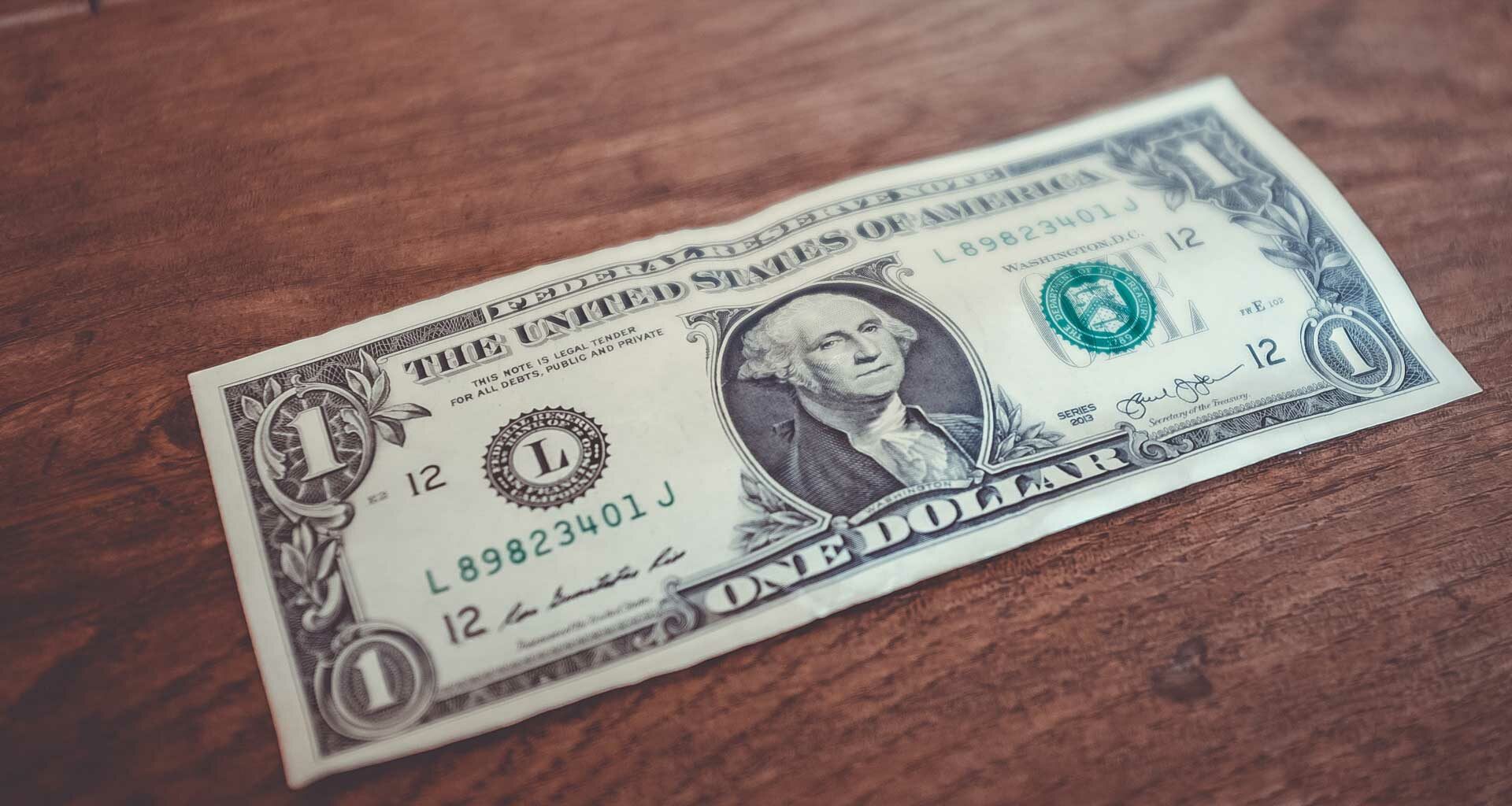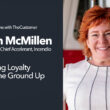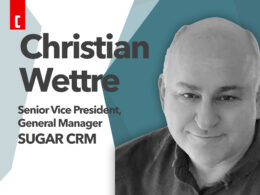We released our Loyalty Leaders List last week, which, I know, sounds like a tongue twister, but isn’t. It’s a cross-category view of loyalty. Extraordinarily useful for identifying loyalty thematics and values.
By Robert Passikoff
This is the 14th year we’ve conducted this particular survey. This year we (well, when I say “we” I mean the brands’ customers) rated 1,624 brands in 142 categories. The link will take you to the top-100 – the top 6% of brands with the greatest loyalty. As a point of clarification, our annual Customer Loyalty Engagement Index (conducted each January, 2023 will be its 26th year) is of greater utility for identifying category-specific values and sector-specific expectation levels. But cross-category or category-specific, there’s a lot of neat your-brand-versus-competitors-versus-the-Category-Ideal insights you can mine from loyalty metrics like those.
But it’s the Loyalty Leaders survey that I’d like to focus on right now. Looking at loyalty as widely, deeply, and cross-categorically it does allows us to identify leading-indicator loyalty values that brands, or at least the ones smart enough to pay attention, can capitalize upon. Do that, and you see something more than just “trends.” Don’t get me wrong, trends are interesting and all that, but considerably less useful in the short-term and require application-interpretation, i.e., guesswork, in the longer term. Particularly in this as-close-as-we’re-going-to-get-to-a-post-COVID- marketplace, where values and expectations are moving at the speed of the consumer.
And yes, I’m a big advocate of loyalty. It’s a proven leading-indicator of consumer behavior. Real loyalty metrics, that is. Those correlate with positive consumer behavior toward a brand. At the 0.80+ level, which is really high, as the statisticians among you can attest. Real loyalty metrics tell you how consumers will view your brand, how they’ll compare your brand to their Ideal and the competition, what consumers really expectand, more importantly, how they’re going to behave. Real loyalty metrics also identify – beyond loyalty leadership (no small potatoes in and of itself) – leadership in other aspects of consumer-life.
So, if you click on that first link it’ll take you to the top-100 brand loyalty leaders for 2022 and you can see how things have changed since last year. And yeah, you’ll find loyalty “perennials” there. Brands that usually show up high each year. Like Apple and Amazon and Domino’s, mainly because they’re doing all the right things. But the annual survey also acknowledges “new” (to the top-100, that is) loyalty leaders. Like Pfizer and Beyond Meat and Paramount+ that, apparently, consumers saw doing the right things for right now. So kudos to them, too. But in this instance, the brand I’d like to call to your attention was ranked #63.
That would be Dollar Tree. Dollar Tree was #63 this year. They have about 15,000+ stores in the 48 contiguous states and Canada. The brand is up 11 places in loyalty leadership from 2021. Which is good, because it means its loyalty strength among customers has gotten stronger. Other things have gotten stronger too. Revenue up 9%. Customers are shopping there more frequently. Dollar Tree’s profit increased 27% to nearly $360 million.
Dollar General (#122 this year, so not appearing in the top-100 list, but up 15 spots from last year), has about 18,000 stores in the continental United States. They saw revenue growth too. About 7%. And a profit increase to $680 million, which generally speaking, is a lot of dollars. You don’t need to be a statistician to appreciate bottom line numbers like those. Oh, and don’t let the ‘Dollar Tree’ and ‘Dollar General’ names mislead you. They’re both Fortune 500 companies.
Retail accounted for nearly a fifth (20%) of this year’s Loyalty Leaders List. And sure, having an actual inventory and good prices during an economic downturn didn’t hurt either Dollar chains. But it wasn’t just the inventory or economy. Or, at least, not primarily product availability or low pricing that drove Dollar Tree’s (and Dollar General’s) loyalty rankings. The Loyalty Leaders List diagnostics showed consumers rewarded each of those brands because they were better able to meet customer expectations when it came to seamless CX. That was what increased loyalty, repeat purchase, and brand advocacy. And profits. Let’s not forget those. Oh, and remember how I said real loyalty metrics also identify – beyond loyalty leadership – leadership in other aspects of consumer-life? Well, I did. In the last line of the second paragraph. It turns out, they do.
We conduct a lot of brand surveys during the year, which examine various category and brand values and expectations related to loyalty. We look at values like who’s being innovative or who’s being patriotic or who’s responsible for effective CSR. And guess what? Dollar Tree (and Dollar General), each of which have high loyalty assessments, also did well in those surveys too. Dollar General was #26 in our annual Most Patriotic Brands survey. Dollar Tree was #60 (we only report out the top-50 brands each year, but congrats to them for that ranking!). In the Retail Sector, Dollar Tree was #13, Dollar General was #22 on this year’s Most Innovative Brands list. We usually only report out the top-10 in each sector, but #13 and #22 is a more than respectable ranking.
Someone once said, “Profit is what happens when you do everything else right.” But years of brand and market research have proven there’s a difference between doing things right and doing the right thing.
Focusing on understanding and building loyalty, it turns out, is always the right thing.
 Robert Passikoff is founder and CEO of Brand Keys. He has received several awards for market research innovation including the prestigious Gold Ogilvy Award and is the author of 3 marketing and branding books including the best-seller, Predicting Market Success. Robert is also a frequent contributor to TheCustomer.
Robert Passikoff is founder and CEO of Brand Keys. He has received several awards for market research innovation including the prestigious Gold Ogilvy Award and is the author of 3 marketing and branding books including the best-seller, Predicting Market Success. Robert is also a frequent contributor to TheCustomer.














Thanks Robert, your survey teaches invaluable things to practice. Loyalty feeds profits as you illustrate well, and I don’t want to oversimplify this, but you point out that it is tied to a good CX – the brand experience. Surely inflation drove consumers to seek good prices, and that drove many to Dollar Tree and Dollar General. But those retailers had to deliver, and clearly, they did and that drove profits. Retailers should study this carefully as they tackle competing with Amazon and DTC.
Thanks Robert, your survey teaches invaluable things to practice. Loyalty feeds profits as you illustrate well, and I don’t want to oversimplify this, but you point out that it is tied to a good CX – the brand experience. Surely inflation drove consumers to seek good prices, and that drove many to Dollar Tree and Dollar General. But those retailers had to deliver, and clearly, they did and that drove profits. Retailers should study this carefully as they tackle competing with Amazon and DTC.
Thanks, for pointing that out, George. One other thought, in economic downturns “price” does matter more in the buying equation for many consumers. The thing is, there are lots of cheaper place than Dollar Tree and Dollar General where they could shop, but in this instance they chose to shop these particular brands – particularly de to the shopping experience. The nice thing about loyalty metrics – besides the fact that they correlate so highly with buying behvaior – is that the come with diagnostics you can use to improve brand engagement and loyalty.
Thanks, for pointing that out, George. One other thought, in economic downturns “price” does matter more in the buying equation for many consumers. The thing is, there are lots of cheaper place than Dollar Tree and Dollar General where they could shop, but in this instance they chose to shop these particular brands – particularly de to the shopping experience. The nice thing about loyalty metrics – besides the fact that they correlate so highly with buying behvaior – is that the come with diagnostics you can use to improve brand engagement and loyalty.